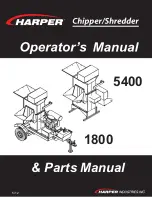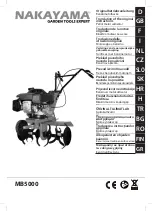
18-AD43D1-1A-EN
3
Installer’s Guide
IMPORTANT:
Do not unseal refrigerant tubing until ready to fit refrigerant
lines.
There is only a holding charge of dry air in the indoor coil, therefore
no loss of operating refrigerant charge occurs when the sealing
plugs are removed.
F. INSTALLING / BRAZING REFRIGERANT LINES
Do NOT open refrigerant valve at the outdoor unit until the
refrigerant lines and coil have been brazed, evacuated, and
leak checked. This would cause contamination of the refriger-
ant or possible discharge of refrigerant to the atmosphere.
1. The following steps are to be considered when installing
the refrigerant lines:
a. Determine the most practical way to run the lines.
b. Consider types of bends to be made and space
limitations.
c. Route the tubing making all required bends and
properly secure the tubing before making final
connections.
NOTE:
Refrigerant lines must be isolated from the structure and
the holes must be sealed weather tight after installation.
NOTE:
The TXV setting on this unit may run high superheat
(15-25°F) by design when measured at the outdoor unit.
Figure 4
Note: When installing coil onto an S-Series furnaces
in horizontal right or downflow configuration, bend
the flanges downward for a flush fit.
CAUTION
!
NOTE:
TXV bulb MUST be protected (wrapped with wet rag) or
removed, while brazing the tubing. Overheating of the
sensing bulb will affect the functional characteristics and
performance of the comfort coil.
When replacing the TXV bulb, reinstall the bulb in the
proper orientation.
9. Wrap the TXV with insulation after the spring clip has been
installed.
G. LEAK CHECK
1. Using a manifold gauge, connect an external supply of dry
nitrogen to the gauge port on the liquid line.
2. Pressurize the connecting lines and indoor coil to 150 PSIG
maximum.
3. Leak check brazed line connections using soap bubbles.
Repair leaks (if any) after relieving pressure.
4. Evacuate and charge the system per the instructions packaged
with the outdoor unit.
Figure 5
Capillary tubes will come
out the top of bulb when
positioned correctly.
PAINTED AREAS OF THE UNIT MUST BE SHIELDED DURING
BRAZING.
1. Remove both rubber plugs from the indoor coil.
2. Field supplied tubing should be cut square, round and free
of burrs at the connecting end. Clean the tubing to prevent
contaminants from entering the system.
3. Run the refrigerant tubing into the stub tube sockets of the
indoor unit coil.
4. Flow a small amount of nitrogen through the tubing while
brazing.
5. Use good brazing technique to make leakproof joints.
6. Minimize the use of sharp 90 degree bends.
7. Insulate the suction line and its fittings.
8. Do NOT allow un-insulated lines to come into contact with
each other.


























